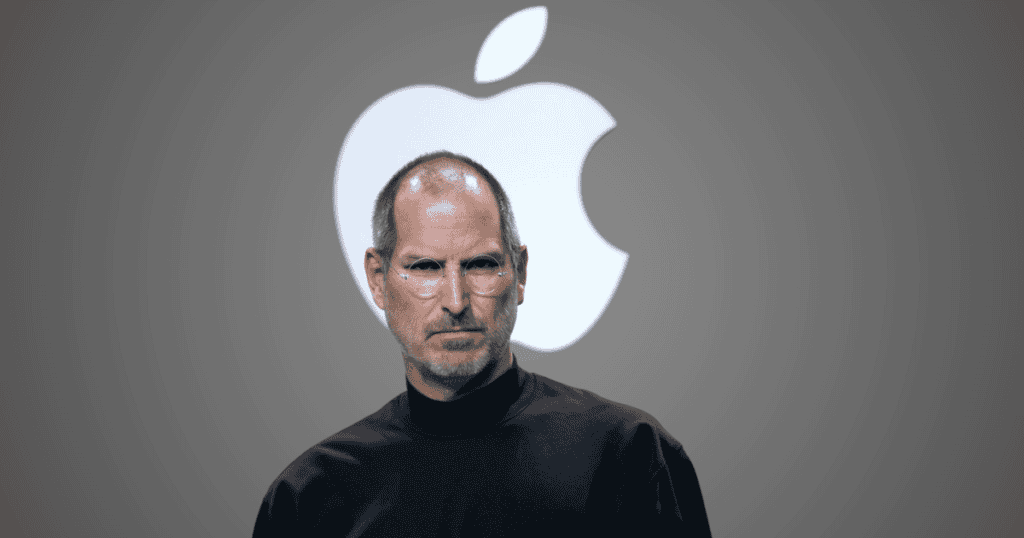Steve Jobs, co-founder of Apple Inc., stands as one of the most influential figures in modern technology. Known for his exceptional vision and relentless pursuit of perfection, Jobs revolutionized industries with products like the iPhone, iPad, and MacBook. His career was marked by extraordinary successes and challenges, shaping Apple into one of the most valuable companies in the world. Beyond the products he developed, Jobs’ leadership and design philosophy continue to influence and inspire generations of innovators and leaders.
Early Life and Influences
Born in 1955 and adopted by Paul and Clara Jobs, Steve Jobs grew up in Silicon Valley, a region that would later become the global hub of technology and innovation. His parents, particularly his father, nurtured his early interest in electronics by involving him in hands-on projects in their garage. This early exposure to technology laid the foundation for his fascination with innovation.
During high school, Jobs met Steve Wozniak, a fellow electronics enthusiast, marking the beginning of a partnership that would eventually lead to the founding of Apple. Jobs briefly attended Reed College before dropping out to explore his interests. He soon joined Atari, where he worked as a technician and gained further exposure to the burgeoning tech industry. These early experiences, coupled with his natural curiosity and drive, set the stage for Jobs’ entrepreneurial journey.
Founding Apple Inc.
In 1976, Jobs, Wozniak, and Ronald Wayne co-founded Apple Computer, Inc. from Jobs’ parents’ garage. With a startup capital of $1,350, the team built the Apple I, one of the first fully assembled personal computers. This innovation set Apple apart, making computing accessible to the general public.
The success of the Apple I paved the way for the Apple II, which launched in 1977. This product became one of the first successful mass-produced microcomputers, revolutionizing home computing and helping Apple achieve over $139 million in revenue by the early 1980s. Jobs’ ability to recognize and capitalize on emerging trends, combined with Wozniak’s engineering prowess, propelled Apple to the forefront of the technology industry.
Innovations and Product Launches
Under Jobs’ leadership, Apple introduced products that redefined technology:
- Apple I (1976): The first product to integrate a fully assembled motherboard, marking a shift towards user-friendly computers.
- Apple II (1977): The first computer to be mass-produced, sparking the personal computing revolution.
- Macintosh (1984): Introduced a graphical user interface and mouse, transforming how people interacted with computers.
- iMac (1998): The first product launched after Jobs returned to Apple, featuring a sleek design that marked a new era for Apple.
- iPod (2001): Revolutionized the music industry by making digital music portable and accessible.
- iPhone (2007): Redefined mobile technology and set the standard for smartphones with its touch interface and design.
- iPad (2010): Opened up a new category of devices, blending the features of a smartphone and a laptop.
Jobs’ approach was to create products that were not only functional but also beautiful, focusing on simplicity and user experience. Each of these products was a significant step forward in technology, with the iPhone alone selling over a billion units by 2021, cementing Apple’s place in history.
Challenges and Setbacks
Despite his successes, Jobs’ career was not without challenges. In 1985, after a power struggle with Apple’s board, Jobs was ousted from the company he co-founded. Determined to continue innovating, he founded NeXT, a company focused on building high-performance computers for business and education. Although NeXT struggled financially, the company developed technologies that would later become integral to Apple’s software.
During this time, Jobs also acquired Pixar, a small computer graphics division from Lucasfilm. After a challenging start, Pixar eventually became a leader in animation, producing hits like Toy Story and revolutionizing the film industry. Pixar’s success not only added to Jobs’ reputation but also highlighted his ability to recognize and nurture talent.
Return to Apple and Strategic Decisions
In 1997, Apple acquired NeXT, bringing Jobs back to the company. Faced with a struggling Apple, Jobs implemented a series of strategic changes that transformed the company:
- Streamlined Product Line: Jobs reduced Apple’s product lineup from 30 models to four, focusing on quality and innovation.
- Secured Microsoft Investment: He negotiated a $150 million investment from Microsoft, which helped stabilize Apple’s finances and brought Microsoft Office to Mac, crucial for business users.
- Revamped Brand and Design: Jobs reimagined Apple’s design philosophy, introducing products like the iMac, which was praised for its aesthetic appeal and functionality.
These decisions revitalized Apple, and with the release of iconic products like the iPod, iPhone, and iPad, the company entered a period of unprecedented growth.
Legacy and Impact on Technology
Steve Jobs’ return to Apple not only saved the company but also set it on a path to become one of the world’s most valuable brands. Under his leadership, Apple introduced the world to devices that not only met consumer needs but also shaped cultural trends. The iPhone, in particular, revolutionized the smartphone industry, setting the standard for mobile devices.
Jobs’ focus on design, simplicity, and user experience continues to be a core part of Apple’s identity. His legacy is evident in the company’s continued success, with Apple achieving a market capitalization of over $2 trillion in 2020. Jobs was inducted into the National Inventors Hall of Fame, further solidifying his impact on the tech world.
Jobs’ Leadership Philosophy
Jobs was known for his demanding yet inspiring leadership style. He believed in end-to-end accountability, often involving himself in every detail of a product’s development. His philosophy centered around three principles:
- Simplicity: Jobs famously said, “Simplicity is the ultimate sophistication.” He believed that great products should be intuitive and easy to use.
- Creativity and Collaboration: Jobs encouraged face-to-face collaboration, believing that the best ideas come from direct interaction among team members.
- Pursuit of Perfection: Jobs’ attention to detail was legendary. He insisted on high-quality materials and impeccable design, often pushing his team to meet exacting standards.
These principles not only shaped Apple but also influenced industries as diverse as technology, entertainment, and retail. Jobs’ approach has been studied and emulated by countless business leaders and entrepreneurs.
The Enduring Legacy of Steve Jobs
Steve Jobs’ life and career exemplify the transformative power of innovation and creativity. From a garage startup to a global empire, Jobs’ journey is a testament to the impact one individual can have on the world. His products transformed how we communicate, work, and entertain ourselves, setting new standards for quality and innovation. As we continue to navigate the digital age, Jobs’ legacy endures, inspiring future generations to think differently, embrace bold ideas, and strive for excellence.




